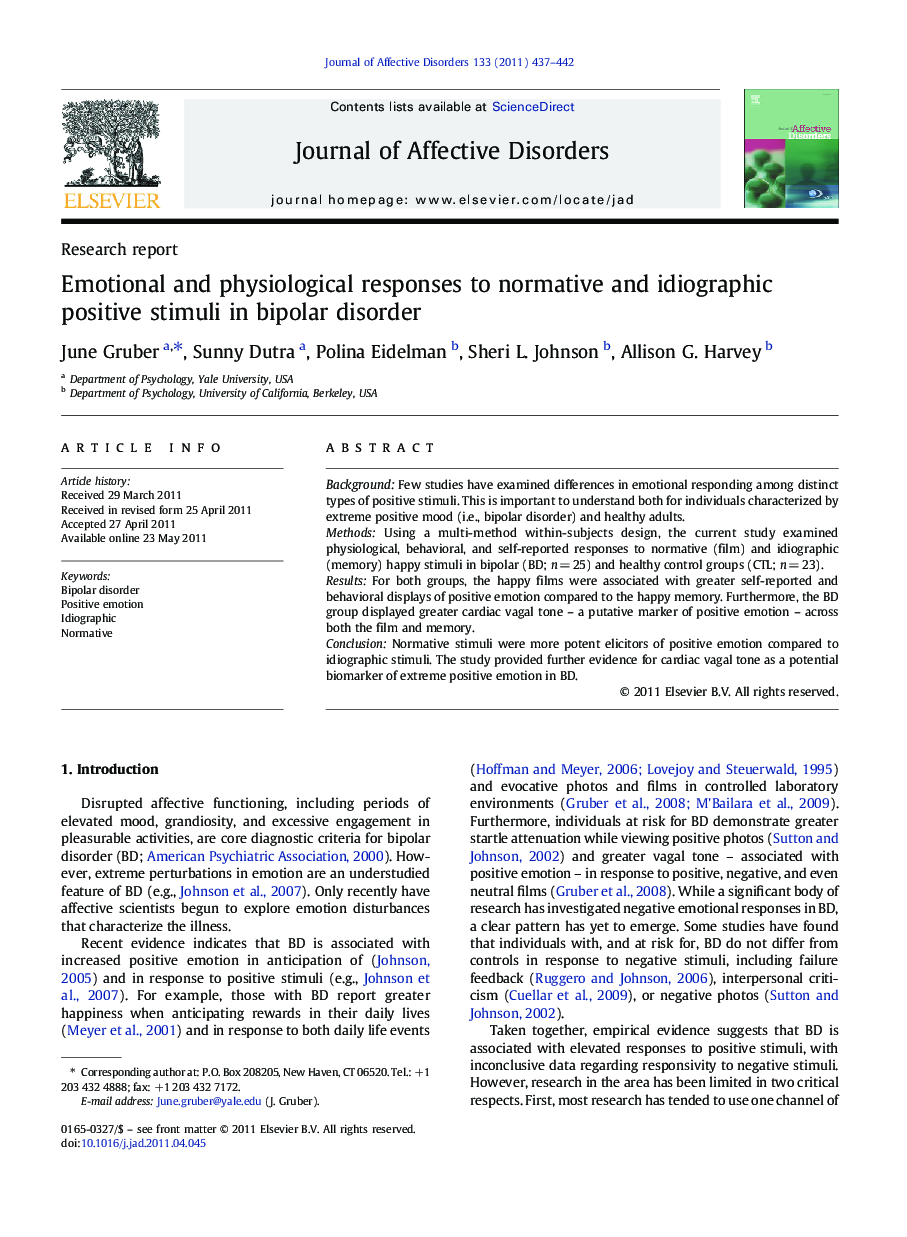| Article ID | Journal | Published Year | Pages | File Type |
|---|---|---|---|---|
| 4186391 | Journal of Affective Disorders | 2011 | 6 Pages |
BackgroundFew studies have examined differences in emotional responding among distinct types of positive stimuli. This is important to understand both for individuals characterized by extreme positive mood (i.e., bipolar disorder) and healthy adults.MethodsUsing a multi-method within-subjects design, the current study examined physiological, behavioral, and self-reported responses to normative (film) and idiographic (memory) happy stimuli in bipolar (BD; n = 25) and healthy control groups (CTL; n = 23).ResultsFor both groups, the happy films were associated with greater self-reported and behavioral displays of positive emotion compared to the happy memory. Furthermore, the BD group displayed greater cardiac vagal tone – a putative marker of positive emotion – across both the film and memory.ConclusionNormative stimuli were more potent elicitors of positive emotion compared to idiographic stimuli. The study provided further evidence for cardiac vagal tone as a potential biomarker of extreme positive emotion in BD.
